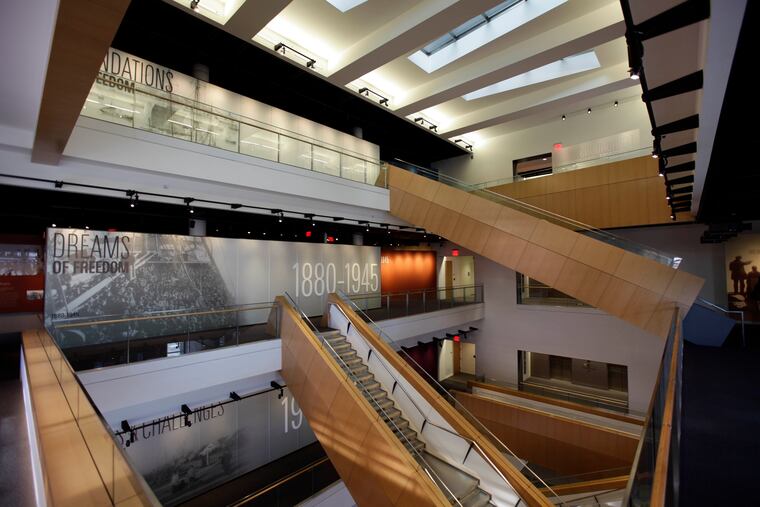What’s at stake for Philadelphia’s cultural institutions goes beyond brick and mortar | Editorial
The National Museum of American Jewish History, a Independence Mall landmark since 2010, has filed for bankruptcy, becoming the latest Philadelphia cultural and historical institution publicly facing money troubles.

The National Museum of American Jewish History has filed for bankruptcy, becoming the latest Philadelphia cultural institution to make headlines for the wrong reasons. Saddled with $30 million in construction debt on the $150 million building it opened in 2010, the museum is struggling to attract donors and visitors. That an institution showcasing the story of an historically persecuted people who helped build America now finds itself in crisis — during a time of rising anti-Semitism and other racial and ethnic divisions — underscores that what’s at stake is more than just bricks and mortar.
This museum on Independence Mall shares challenges with other nonprofit cultural organizations such as the Historical Society of Pennsylvania and the Philadelphia History Museum. In recent years the Philadelphia Theatre Company and Please Touch Museum also have struggled with heavy loads of debt. And the Painted Bride arts center has sought to sell its beloved Old City building to a developer.
Whether all this represents a crisis in the city’s cultural landscape — or reflects a landscape that’s evolving along with the culture — remains to be seen. Many of the city’s major cultural institutions receive little if any public funding and must compete for support from a shrinking donor pool. They’re also vying for audiences who’ve got many outlets for their leisure dollars, such as streaming a movie at home. And like the donor pool, the audience for cultural programming tends to be older and whiter than the city as a whole.
The Greater Philadelphia Cultural Alliance, an advocate for 460 arts and culture organizations in the region is preparing a new, five-year strategic plan for members to increase funding and audience-engagement, and boost the diversity and inclusiveness of programming. Separately, the William Penn Foundation has given the city a $250,000 planning grant for the first-ever comprehensive, citywide inventory of Philly’s historical and cultural assets. Creating the inventory was among the recommendations of Mayor Jim Kenney’s Historic Preservation Task Force, which the foundation also supported. Local residents will get a chance to weigh in about historically significant places and cultural spaces in the communities where they live; this will help neighborhoods facing real estate development pressures to preserve what matters most to the people who live in them.
» READ MORE: Philadelphia Theatre Company gets its theater back
» READ MORE: Out of bankruptcy, Please Touch Museum maps the future
This is good news, because a new generation of arts and culture donors is emerging. These younger funders often want their money to have a measurable social impact, and prefer to support smaller or emerging organizations that do adventurous or topical work. So the generational evolution among donors may itself add to Philly’s cultural vibrancy in welcome new ways.
Big mainstream institutions contribute to that vibrancy as well. The challenge for the Jewish museum, like the Please Touch and PTC before it, is the debt burden from ambitious construction projects. Its formidable building at Fifth and Market streets can be a bit hard to love. But speakers, events, and exhibits the museum presents are part of the region’s shared cultural and social fabric. Across the country, the fabric is fraying. And that means the places that preserve the stories history tells and the lessons it teaches are more essential than ever.